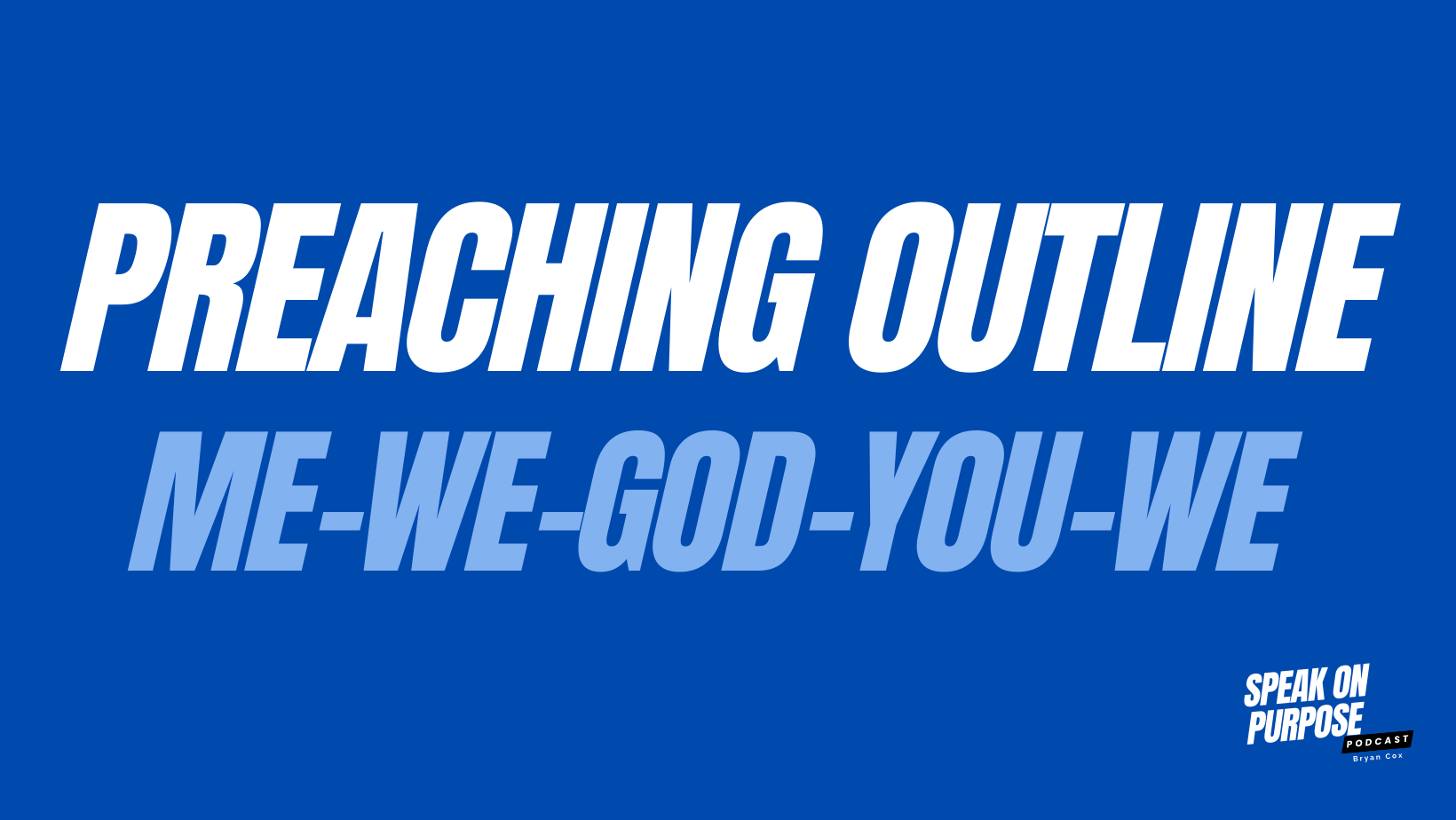Me-We-God-You-We - Preaching Outline

Preaching Outline:
I heard a quote from George Bernard Shaw. He says this the single biggest problem in communication is the illusion that it is taking place. You can say something all day long, it doesn't mean that they heard it. See how you say it matters.
So let me ask you this question how did you do on your last presentation when you stood up in front of people and you began to speak? Did they hear you? or did they tune you out. Did it resonate with them in their heart? Did it make them want to change?
One way to get to the core of your message is to ask this questions. "What's at stake for my audience?" Understanding the potential consequences for your audience if they don't grasp your message can sharpen your focus and elevate your impact. By answering this question, you can ensure that your presentation is both impactful and memorable.
Next, we introduce the simple yet powerful communication structure from Andy Stanley's book, "Communicating for Change." This involves a five-word outline: me, we, god, you, we. This structure aims to convey one big idea in a conversational manner, making it easier for the audience to understand and apply.
- Rather than create an outline (which organizes thoughts & ideas), create a map that allows you stay on track to your destination.
- Me-We-God-You-We:
- ME: Introduce a dilemma you have faced or are currently facing.
- “I really struggle with finding my purpose or God’s will for my life.”
- “I imagine you have found it difficult also.”
- WE: Find a common ground with your audience around the same dilemma. Don’t leave this section until you have created a tension that your audience is dying for you to resolve.
- GOD: Now transition to the text to discover what God says about the tension or the question you have introduced. Engage the audience with the text. And finish with a pre-prepared and succinct summary statement of the text.
- YOU: Then you challenge your audience to act on & apply what they have just heard. (Application)
- WE: And finally, you close with several statements about what could happen in your community, your church, or the world, if everybody embraced that particular truth (“vision casting”). Imagine what could be.
- Internalize the Message
- The message must become a part of you. If you can’t remember it, how can they?
- In the old days, preachers called this their “burden.” It’s a message that comes from inside you.
- When you stand up and speak without notes and without having to read your sermon, you’re saying, ‘This is so important that it’s a part of me—and I think you should make it a part of you, too.’
- Can’t teach what you don’t understand
– Engage the Audience
- Engage the audience early on (in the “we” section) to ensure that they’re with you on the journey. They must feel a real need in their lives, a real question emerges that you will answer. Remind them of a tension they already feel.
- Presentation is more important than information for engaging an audience. If you don’t engage your audience ASAP, you’ve lost them.
- 3 good questions to consider with your introduction:
- (1) What big question am I answering?
- (2) What felt tension will this message resolve?
- (3) What mystery does this sermon solve?
Because you’re the only one who knows where you’re going in the journey, everyone is looking to you for signals of when to turn – giving verbal & non-verbal cues of a transition so that people don’t feel lost or dizzy.
– Find Your Voice
- Be authentic but don’t use this as an excuse for any bad communication habits.
7 – Start All Over
- When you get stuck, first, pray hard!
- “Don’t dismiss principles of communication in defense of style. If you want to be an effective communicator, you must allow communication principles to shape your style.”
- In your quest to develop an effective style, ask yourself: (1) What works? – be on the lookout for new principles & methods of communication (2) What works for me? – continually evaluate & tweak your delivery.
Please let me know if you have any questions and thanks for reading.
Bryan






